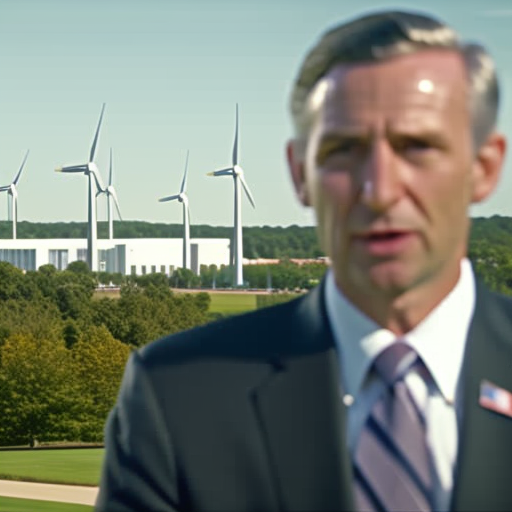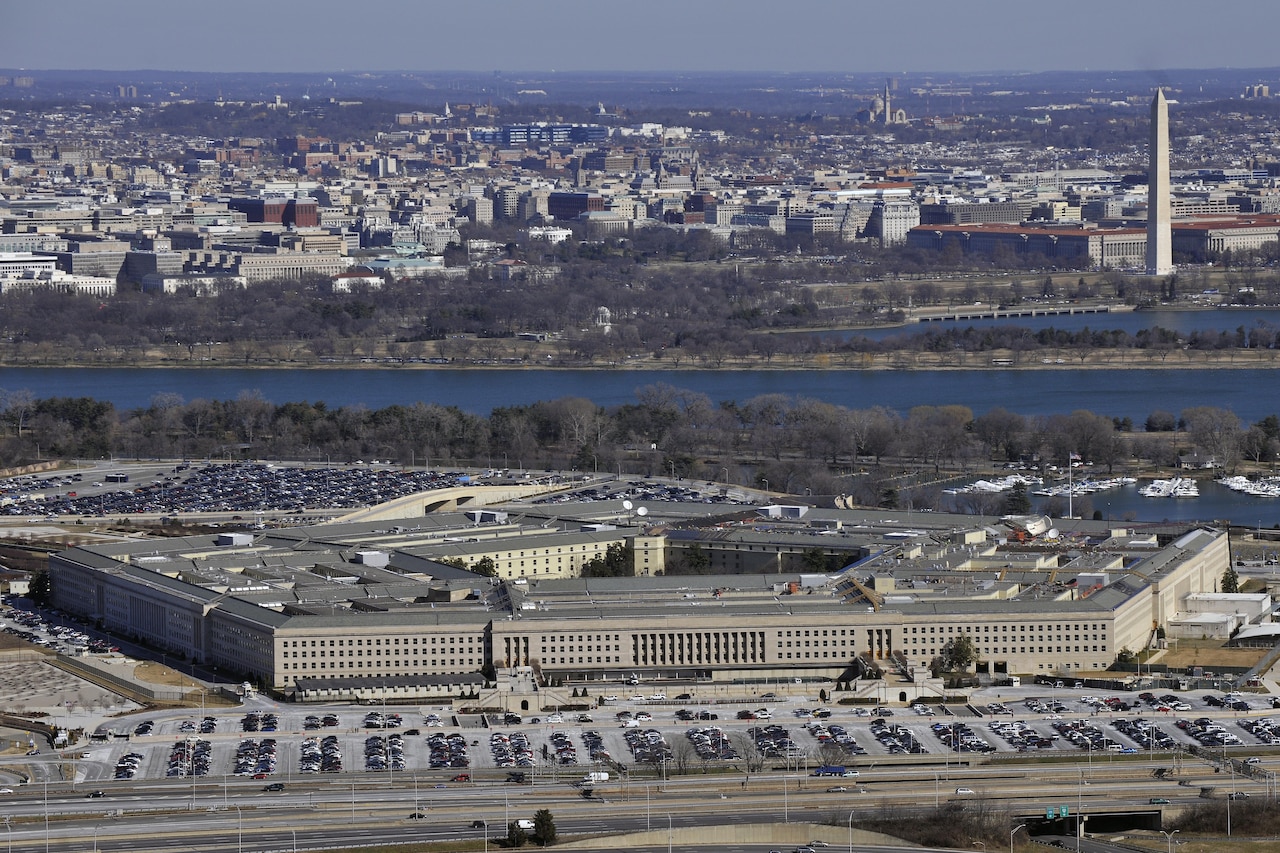
Partnership Announced to Achieve Carbon Pollution-Free Electricity Targets

Introduction
The Department of Defense (DoD), on behalf of all Federal agencies, has announced its partnership with Dominion Energy Virginia (Dominion Energy) to work jointly towards achieving the carbon pollution-free electricity targets established in President Biden’s Federal Sustainability Plan and Executive Order 14057 of December 8, 2021.
Sustainable Development Goals
The partnership aligns with the Sustainable Development Goals (SDGs) set by the United Nations, specifically Goal 7: Affordable and Clean Energy, and Goal 13: Climate Action.
Federal Sustainability Plan
President Biden’s Federal Sustainability Plan directs the Government to lead by example in tackling the climate crisis. It sets ambitious goals to achieve 100% carbon pollution-free electricity (CFE) for federal government operations by 2030, including 50% on a 24/7 hourly matched basis. The plan also includes targets for electric vehicles and net-zero emissions buildings.
Importance of Partnerships
The Department of Defense, being the largest energy consumer in the federal government, recognizes the critical importance of partnerships with energy service providers. The partnership with Dominion Energy will ensure that military installations are supplied with resilient, reliable, and clean electricity, enhancing military readiness and strengthening local communities.
Benefits of Carbon-Free Electricity
The demand for new sources of locally supplied carbon-free electricity will save taxpayer money, create good-paying jobs, contribute to a more stable and resilient grid, and improve air quality in local communities.
Potential Solutions
DoD and Dominion Energy are exploring several potential solutions to achieve resilient, reliable, and clean electricity:
- Regulated tariffs: Dominion Energy offers regulated tariff products that provide clean, resilient, and cost-effective sources of clean electricity.
- Onsite generation development: Dominion Energy is exploring opportunities to build carbon pollution-free generation assets on DoD land in Virginia, improving the resiliency of military installations and supporting the decarbonization of the region’s electricity grid.
- Energy efficiency: Dominion Energy offers energy efficiency programs that can support DoD and other federal agencies’ energy and resilience goals while reducing the overall load on the electric system.
Public-Private Collaboration
The partnership between DoD and Dominion Energy exemplifies how the public and private sectors can work together to promote a cleaner environment, create jobs and economic opportunities, and strengthen the nation’s energy security.
Government’s Role in Clean Energy Transition
President Biden has charged the federal government to use its buying power as the largest energy consumer in the nation to support the growth of America’s clean energy industry. Strengthening partnerships with utilities, like Dominion Energy, will spur new clean electricity production, create jobs, increase resilience to climate change, and enhance national security.
Future Partnerships
DoD will continue to seek partnership opportunities to achieve President Biden’s carbon pollution-free electricity goals and build a robust, clean, and domestically based electricity supply chain by 2030.
Conclusion
The partnership between DoD and Dominion Energy represents a significant step towards achieving the carbon pollution-free electricity targets set by President Biden’s Federal Sustainability Plan. By working together, the federal government and private sector can contribute to the Sustainable Development Goals and create a more sustainable and resilient future.
Background
The U.S. Government, with its vast number of buildings and vehicles, is the nation’s largest energy consumer. President Biden’s Federal Sustainability Plan aims to transition the government to net-zero emissions by 2050 through the use of zero-emission vehicles, energy-efficient buildings, and carbon pollution-free electricity. The plan sets a target of 100% carbon pollution-free electricity by 2030, with at least half being locally supplied clean energy. The government has already signed agreements to provide federal facilities in 16 states with 100% carbon pollution-free electricity by 2030.
SDGs, Targets, and Indicators
1. Which SDGs are addressed or connected to the issues highlighted in the article?
- SDG 7: Affordable and Clean Energy
- SDG 9: Industry, Innovation, and Infrastructure
- SDG 11: Sustainable Cities and Communities
- SDG 13: Climate Action
- SDG 17: Partnerships for the Goals
The article discusses the partnership between the Department of Defense (DoD) and Dominion Energy Virginia to achieve carbon pollution-free electricity targets. This aligns with SDG 7, which aims to ensure access to affordable, reliable, sustainable, and modern energy for all. The article also mentions the exploration of clean power generation, energy efficiency, and resilience-enhancing distributed energy resources, which are relevant to SDG 9 (innovation and infrastructure), SDG 11 (sustainable cities and communities), and SDG 13 (climate action). Additionally, the partnership between the DoD and Dominion Energy represents a collaboration between the public and private sectors, contributing to SDG 17 (partnerships for the goals).
2. What specific targets under those SDGs can be identified based on the article’s content?
- Target 7.2: Increase substantially the share of renewable energy in the global energy mix.
- Target 9.4: Upgrade infrastructure and retrofit industries to make them sustainable, with increased resource-use efficiency and greater adoption of clean and environmentally sound technologies and industrial processes.
- Target 11.6: Reduce the adverse per capita environmental impact of cities, including by paying special attention to air quality and municipal and other waste management.
- Target 13.2: Integrate climate change measures into national policies, strategies, and planning.
- Target 17.17: Encourage and promote effective public, public-private, and civil society partnerships, building on the experience and resourcing strategies of partnerships.
The article’s content suggests targets related to increasing the share of renewable energy (Target 7.2), upgrading infrastructure and industries for sustainability (Target 9.4), reducing environmental impact in cities (Target 11.6), integrating climate change measures into policies (Target 13.2), and promoting effective partnerships (Target 17.17).
3. Are there any indicators mentioned or implied in the article that can be used to measure progress towards the identified targets?
- Percentage of carbon-free electricity in federal government operations
- Percentage of on-site clean power generation
- Energy efficiency improvements in federal agencies
- Reduction in carbon emissions from federal facilities
- Number of clean energy projects implemented on DoD land
The article mentions the goal of achieving 100% carbon pollution-free electricity for federal government operations by 2030. This can be used as an indicator to measure progress towards Target 7.2. The exploration of on-site clean power generation and energy efficiency programs can be indicators for Target 9.4. The reduction in carbon emissions from federal facilities can be an indicator for Target 11.6. The implementation of clean energy projects on DoD land can also be an indicator for Target 11.6.
4. Table: SDGs, Targets, and Indicators
| SDGs | Targets | Indicators |
|---|---|---|
| SDG 7: Affordable and Clean Energy | Target 7.2: Increase substantially the share of renewable energy in the global energy mix. | – Percentage of carbon-free electricity in federal government operations |
| SDG 9: Industry, Innovation, and Infrastructure | Target 9.4: Upgrade infrastructure and retrofit industries to make them sustainable, with increased resource-use efficiency and greater adoption of clean and environmentally sound technologies and industrial processes. | – Percentage of on-site clean power generation – Energy efficiency improvements in federal agencies |
| Target 11.6: Reduce the adverse per capita environmental impact of cities, including by paying special attention to air quality and municipal and other waste management. | – Reduction in carbon emissions from federal facilities – Number of clean energy projects implemented on DoD land |
|
| SDG 13: Climate Action | Target 13.2: Integrate climate change measures into national policies, strategies, and planning. | – Reduction in carbon emissions from federal facilities |
| SDG 17: Partnerships for the Goals | Target 17.17: Encourage and promote effective public, public-private, and civil society partnerships, building on the experience and resourcing strategies of partnerships. | – Number of clean energy projects implemented on DoD land |
Copyright: Dive into this article, curated with care by SDG Investors Inc. Our advanced AI technology searches through vast amounts of data to spotlight how we are all moving forward with the Sustainable Development Goals. While we own the rights to this content, we invite you to share it to help spread knowledge and spark action on the SDGs.
Fuente: miragenews.com

Join us, as fellow seekers of change, on a transformative journey at https://sdgtalks.ai/welcome, where you can become a member and actively contribute to shaping a brighter future.






